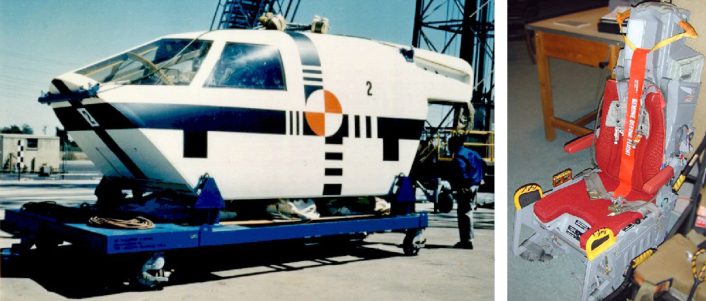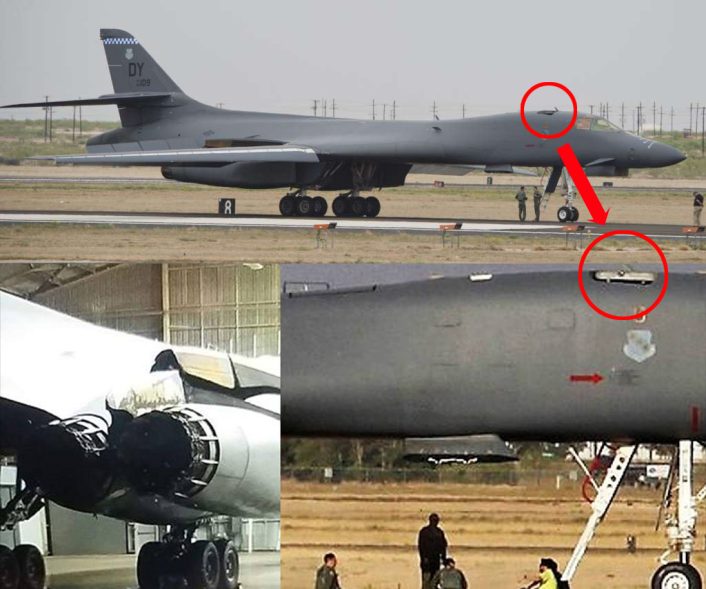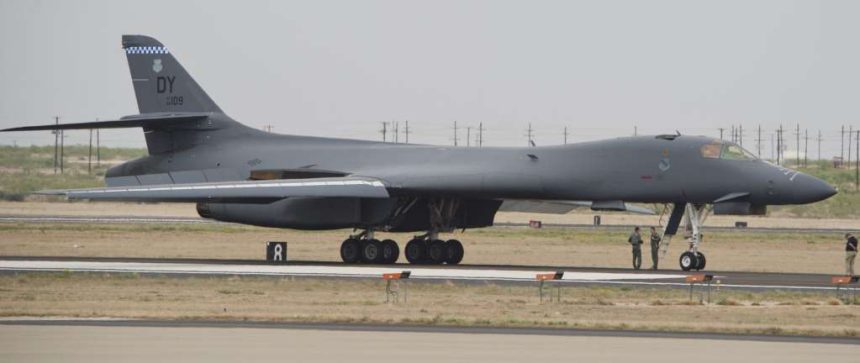New Bomber Crew Stayed with Aircraft After Ejection Seat Failed.
In a stunning story of split-second decision-making under pressure, heroic, selfless action and remarkable airmanship, the drama of what really happened in a burning B-1B bomber over Texas on May 1, 2018 has finally been revealed.
Earlier this week in Washington, Secretary of the Air Force Dr. Heather Wilson finally told reporters and Air Force personnel what has been secretly talked about on back-channels since the incident occurred, Air Force Times Tara Copp reported.
A B-1B supersonic heavy bomber from the 7th Bomb Wing at Dyess Air Force Base in Texas was returning from a routine training sortie on May 1. The aircraft’s young crew of four, the senior aircraft commander- likely the instructor, the copilot, an offensive systems operator, and the defensive systems operator are on board. The names of the crew have not yet been released.
A fire warning light illuminated in the cockpit. According to credible reports, it was likely the number three engine on the aircraft’s right wing located closest to the fuselage. The number two and number three engines are the closest to the complex apparatus that moves the B-1B’s variable geometry swept wings. They are also close to the aircraft fuel tanks.
The crew initiated the emergency checklist procedures for extinguishing a fire in an engine. It was likely calm but businesslike in the cockpit.
The fire continued. The final item on the emergency checklist is: “Eject”.
The early B-1A prototypes were originally designed with a crew escape capsule that rocketed off the fuselage as one unit. The escape capsule was not engineered into production B-1B bombers when the program was renewed in 1982 by the Reagan administration. As a result, four lighter weight individual Weber Aircraft ACES II (Advanced Crew Ejection Seat II) ejection seats were installed in production B-1Bs. The ACES II is a proven and effective ejection seat with well over 600 successful crew escapes and the lowest frequency of user injuries of any ejection seat in history.

When the aircraft commander ordered the ejection of the crew from the burning aircraft over Texas the first crewmember to actuate their ejection seat was the right/rear seat on the aircraft, the Offensive Systems Operator.
When the crewmember pulled the ejection seat handles the hatch above the OSO’s ejection seat exploded off the aircraft. But the Offensive Systems Operator ejection seat did not fire. The Offensive Systems Operator was trapped under an open hatch on an armed ejection seat in a burning aircraft. Other than having a fire in the cockpit, this was a worse-case scenario.
Dr. Wilson told reporters that, “Within two seconds of knowing that had happened the aircraft commander says, ‘Cease ejection. We’ll try to land.”
Secretary Wilson told reporters on Monday that after the ejection sequence was initiated in the B-1B, “That did two things. First the airman who’s sitting on an ejection seat where he’s pulled the fire pins ― and sits there for the next 25 minutes. Wondering whether ― it’s like pulling out the pin on a grenade and holding it as you come in to land. And not knowing whether the next piece of turbulence is going to cause you to launch.”
Having cancelled the ejection of the crew from the burning bomber, the aircraft commander declared an emergency and diverted to Midland International Air and Space Port between Midland and Odessa, Texas, over 150 miles from their original base at Dyess AFB.
The pilot and flight crew flew the B-1B the entire way to Midland while it was on fire with a missing hatch, had no cockpit pressurization and an armed ejection seat that could fire at any moment without warning. Even the impact of a normal landing could have triggered the ejection seat to ignite its rockets and leave the aircraft.
The crew recovered the aircraft to Midland without injury or further damage to the aircraft, saving every member on board and the 400 million-dollar B-1B.

Dr. Heather Wilson concluded her recounting of the heroic B-1B crew’s actions by acknowledging, “The courage it took and the valor represented by that aircraft commander who decided, ‘We are going to try for all of us to make it, rather than sacrifice the one guy who can’t get out.’ Those are the men and women who choose to wear the uniform of the United States Air Force.”
The B-1 incident led to a temporary stand-down of the whole B-1 fleet as all ejection seats were inspected. The grounding was lifted on Jun. 19.
Top image: the B-1B from Dyess AFB after the May 1, 2018 emergency landing in Texas. Notice the missing hatch on top of the aircraft. (Photo: Time Fischer/Midland Reporter-Telegram)







